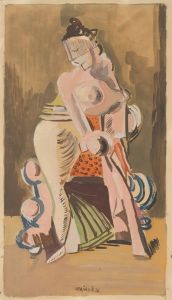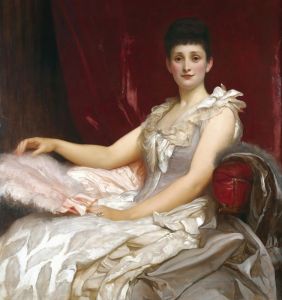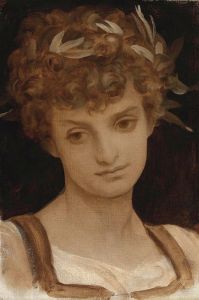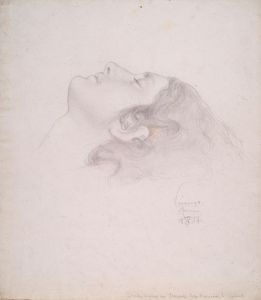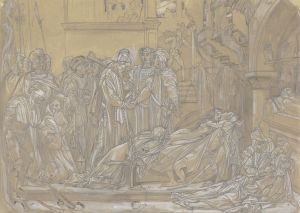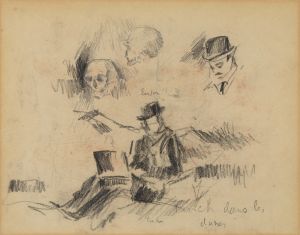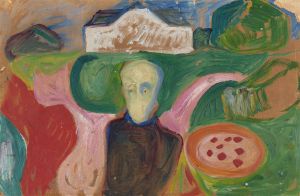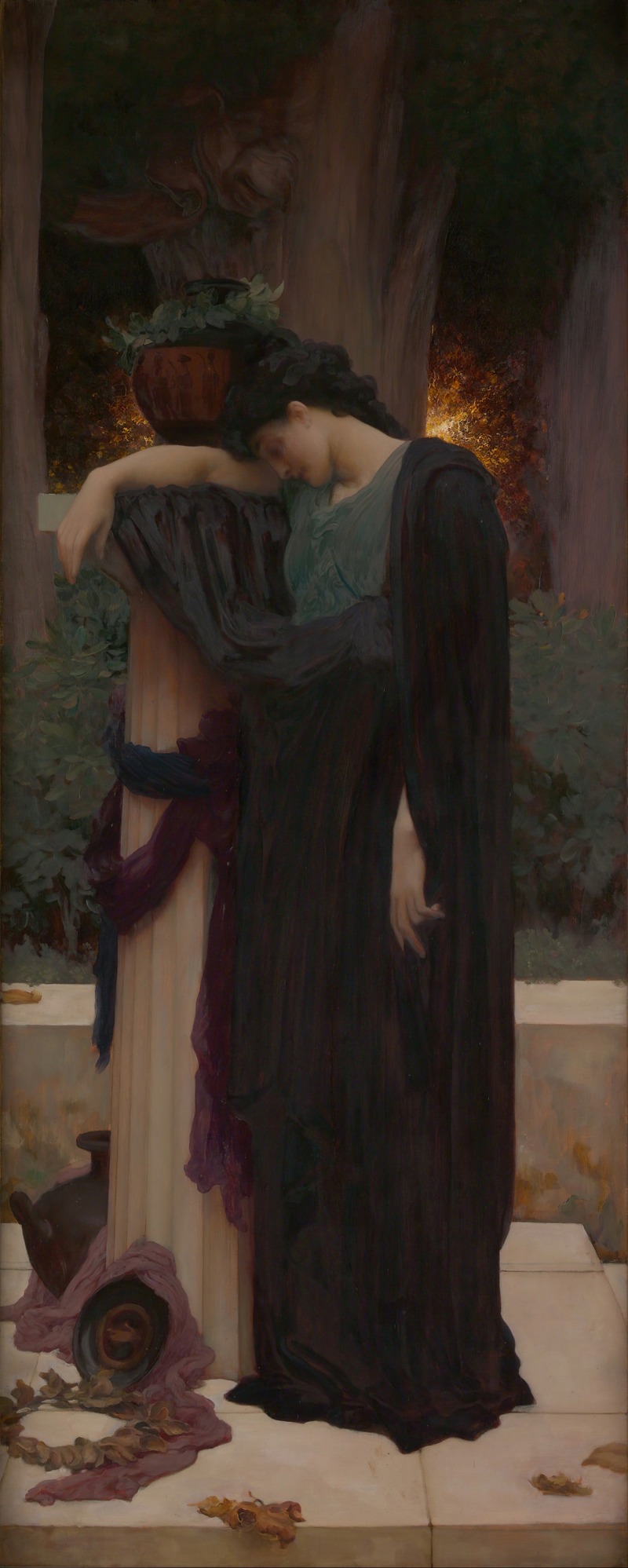
Lachrymae
A hand-painted replica of Frederic Leighton’s masterpiece Lachrymae, meticulously crafted by professional artists to capture the true essence of the original. Each piece is created with museum-quality canvas and rare mineral pigments, carefully painted by experienced artists with delicate brushstrokes and rich, layered colors to perfectly recreate the texture of the original artwork. Unlike machine-printed reproductions, this hand-painted version brings the painting to life, infused with the artist’s emotions and skill in every stroke. Whether for personal collection or home decoration, it instantly elevates the artistic atmosphere of any space.
Frederic Leighton’s painting Lachrymae is a notable work by the British artist and sculptor, who was a leading figure in the Victorian art world and associated with the Aesthetic Movement. Completed in 1895, Lachrymae exemplifies Leighton’s mastery of classical themes and his dedication to beauty, form, and emotional expression.
The title Lachrymae is derived from the Latin word for "tears," and the painting reflects themes of mourning and loss. It depicts a solitary female figure, dressed in a flowing, dark gown, leaning against a classical funerary urn. The urn is set on a pedestal, surrounded by a serene and timeless architectural setting that evokes ancient Greece or Rome. The woman’s pose, with her head bowed and her body slightly turned away, conveys a quiet, introspective sorrow. Her downcast gaze and the subdued palette of the painting further emphasize the mood of melancholy.
Leighton was known for his meticulous attention to detail and his ability to blend classical influences with a modern sensibility. In Lachrymae, the drapery of the woman’s gown is rendered with exquisite precision, showcasing Leighton’s skill in depicting texture and movement. The composition is carefully balanced, with the vertical lines of the pedestal and urn contrasting with the soft curves of the figure. The background, though understated, provides a sense of depth and timelessness, enhancing the contemplative atmosphere.
The painting was created during the later years of Leighton’s career, a period when he produced some of his most refined and emotionally resonant works. Lachrymae reflects his interest in themes of mortality and the human condition, which were common in Victorian art and literature. The work also aligns with the ideals of the Aesthetic Movement, which emphasized art for art’s sake and sought to create beauty without necessarily conveying a specific narrative.
Lachrymae is housed in the collection of the Metropolitan Museum of Art in New York City. It remains a significant example of Leighton’s artistic achievements and his ability to evoke profound emotion through classical imagery. The painting continues to be admired for its technical excellence and its poignant exploration of universal themes of grief and remembrance.






